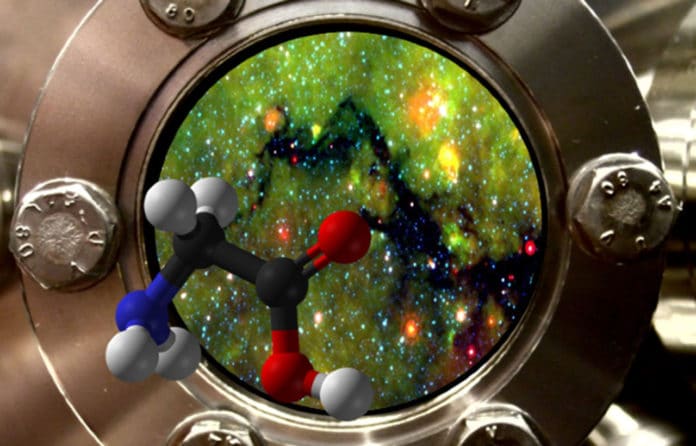Comets are the most pristine material in our Solar System and reflect the molecular composition present when our solar system form. The recognition of glycine in the coma of comet 67P/Churyumov-Gerasimenko and samples returned them to Earth from the Stardust mission proposes that amino acids, for example, glycine, form a long time before stars. However, until recently, it was believed that glycine development required energy, setting clear limitations to the environment in which it tends to be formed.
In the new study, an international team of astrophysicists and astrochemical modelers mostly based at the Laboratory for Astrophysics at Leiden Observatory, the Netherlands, suggest that glycine, and very likely other amino acids, form in dense interstellar clouds well before they transform into new stars and planets. Glycine can form on the surface of icy dust grains, in the absence of energy, through ‘dark chemistry.’
Dr. Sergio Ioppolo, from the Queen Mary University of London and lead author of the article, said: “Dark chemistry refers to chemistry without the need of energetic radiation. In the laboratory, we were able to simulate the conditions in dark interstellar clouds where thin layers of ice cover cold dust particles and subsequently processed by impacting atoms causing precursor species to fragment and reactive intermediates to recombine.”
Scientists initially indicated that methylamine, the precursor species of glycine detected in the coma state of the comet 67P, could form. Then, using a unique ultra-high vacuum setup, equipped with a series of atomic beamlines and accurate diagnostic tools, they affirmed glycine could also be formed and that the presence of water ice was essential in this process.
Further investigation using Astrochemical models confirmed the experimental results. It allowed the researchers to extrapolate data obtained on a typical laboratory timescale of just one day to interstellar conditions, bridging millions of years.
Professor Herma Cuppen from Radboud University, Nijmegen, responsible for some of the modeling studies within the paper, said, “From this, we find that low but substantial amounts of glycine can be formed in space with time.”
Harold Linnartz, Director of the Laboratory for Astrophysics at Leiden Observatory, said, “The important conclusion from this work is that molecules that are considered building blocks of life already form at a stage that is well before the start of star and planet formation. Such an early formation of glycine in the evolution of star-forming regions implies that this amino acid can be formed more ubiquitously in space and is preserved in the bulk of ice before inclusion in comets and planetesimals that make up the material from which ultimately planets are made.”
Dr. Ioppolo said, “Once formed, glycine can also become a precursor to other complex organic molecules. Following the same mechanism, in principle, other functional groups can be added to the glycine backbone, resulting in other amino acids, such as alanine and serine, in dark clouds in space. In the end, this enriched organic molecular inventory is included in celestial bodies, like comets, and delivered to young planets, as happened to our Earth and many other planets.”
Journal Research:
- Ioppolo, S., Fedoseev, G., Chuang, KJ. et al. ‘A non-energetic mechanism for glycine formation in the interstellar medium’. Nat Astron (2020). DOI: 10.1038/s41550-020-01249-0.
